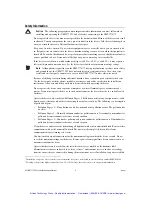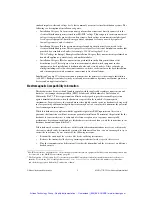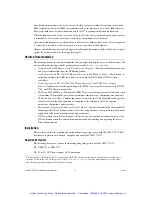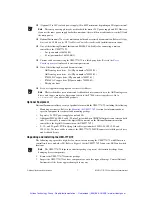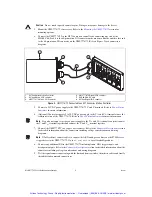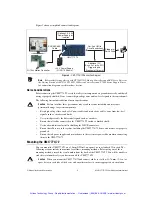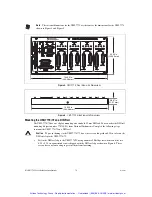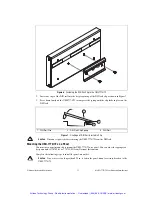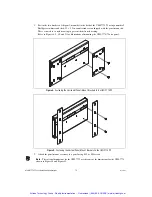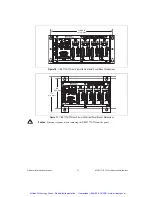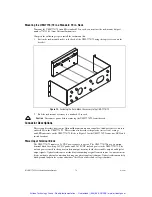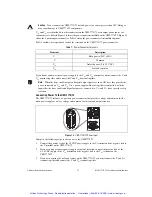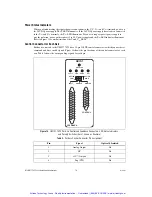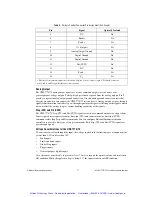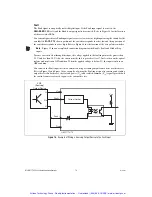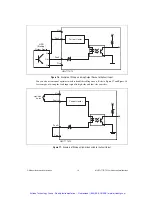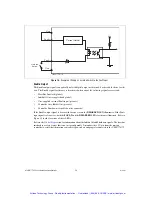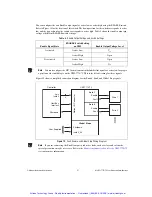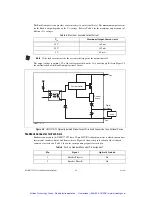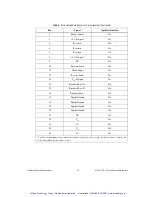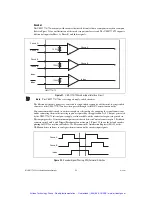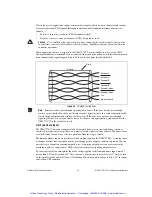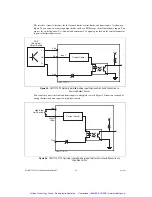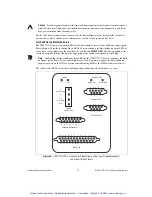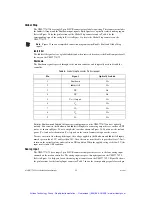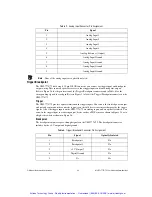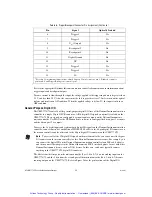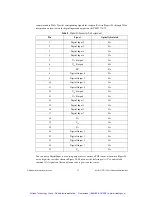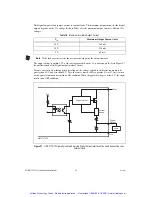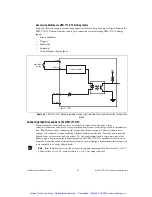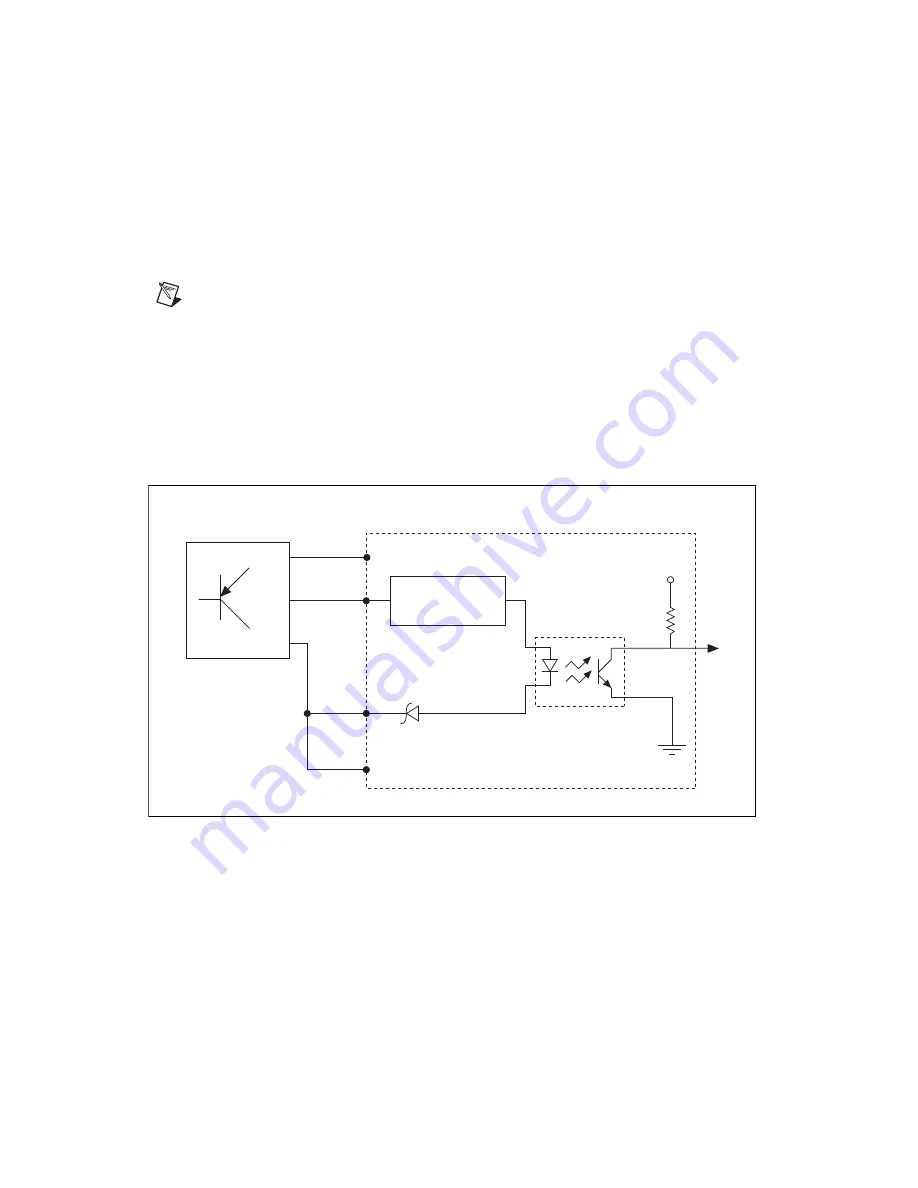
NI UMI-7774/72 User Guide and Specifications
18
ni.com
Fault
The Fault signal is an optically isolated digital input. If the Fault input signal is asserted, the
DISABLED
LED is lit and the Enable output signal is deactivated. Refer to Figure 14 for the location
of the axis status LEDs.
You can configure the axis Fault input signals as active low or active high inputs using the switch for the
axis labeled
FAULT
. The down position of the switch corresponds to active low and the up position of
the switch corresponds to active high. Refer to Figure 14 for the location of the axis polarity switches.
Note
Figure 19 shows a simplified connection diagram for the Enable, Fault, and Global Stop
inputs.
To cause current to flow through the input, the voltage applied to the fault input must be greater than
3.5 V and less than 30 V. Also, the source must be able to provide at least 7.2 mA to turn on the optical
isolator and result in an ON condition. When the applied voltage is below 2 V, the input results in an
OFF condition.
You can wire the Fault input to either a current sourcing or sinking output from a drive or other device.
Refer to Figure 15 and Figure 16 for examples of wiring the Fault input signal to sourcing and sinking
output devices. In both cases, the isolated power (V
iso
) and isolated common (C
iso
) signals provided on
the control connector are used to power the external devices.
Figure 15.
Example of Wiring a Sourcing Output Device to the Fault Input
Current Limiter
PNP
(Sourcing)
Output Device
Fault –
Viso
Ciso
Vcc
UMI-7774/72
V–
V+
Out
Fault +
Artisan Technology Group - Quality Instrumentation ... Guaranteed | (888) 88-SOURCE | www.artisantg.com

